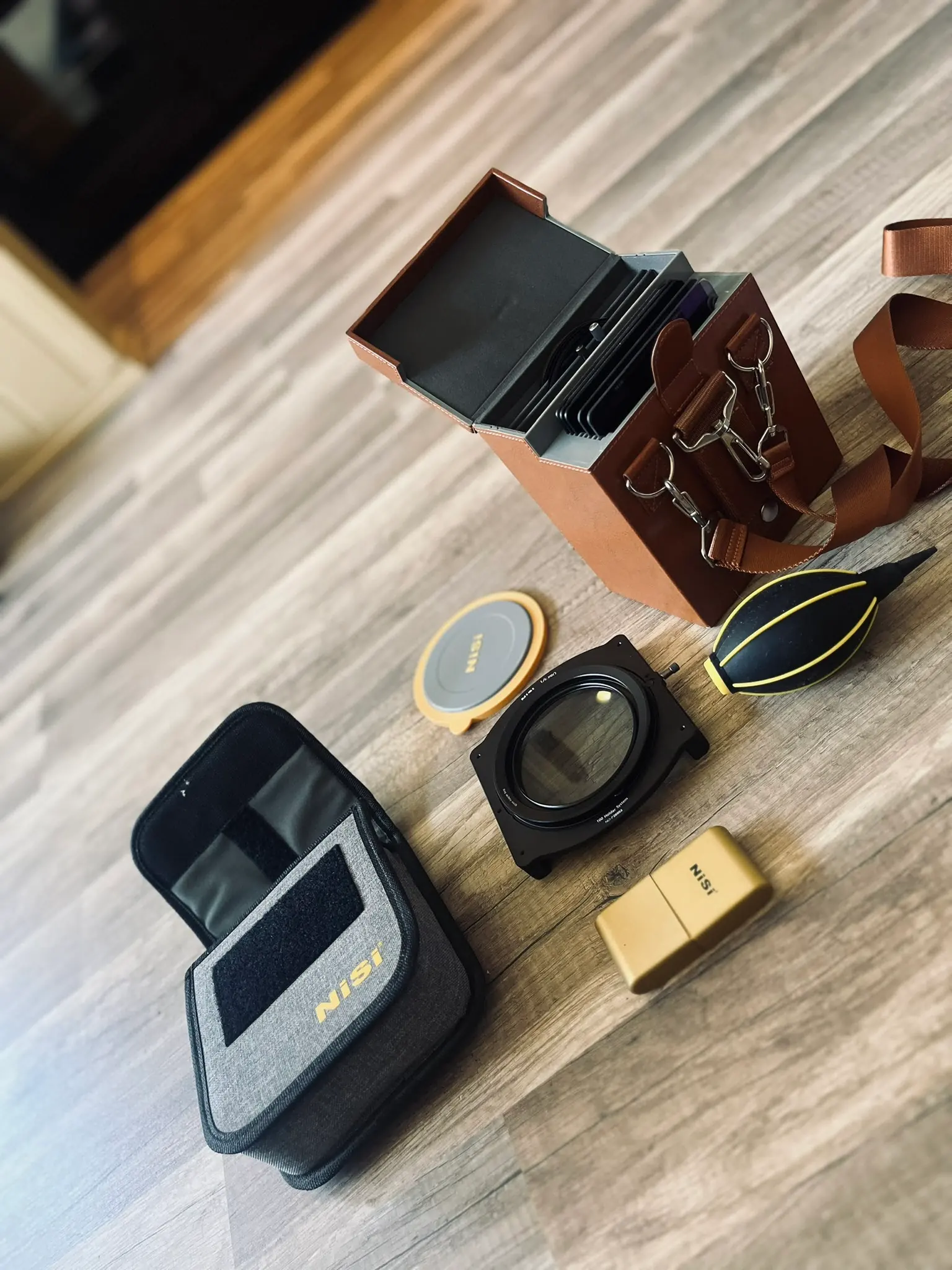
MAGNUS.TOWN
:
New NISI Filters!
18 March, 2025
Expanding My Photography Toolkit with NISI Filters
My style of photography hasn’t really settled yet. If you look at my gallery, you’ll see a mix of different approaches. Some documentary-style shots, street photography, urban and architectural compositions, and quite a few landscapes and sunsets. Over time, I’ve noticed that I keep coming back to landscapes.
Landscape Photography Inspirations
Some of my biggest inspirations for shooting landscapes on film have been:
Each of these photographers has their own approach, but one thing I’ve noticed, especially in Alex Burke’s work, is his extensive use of filters. This made me realize how essential they are for improving film photography, especially in challenging lighting conditions.
Why Use Filters for Film Photography?
Film has a certain charm that digital photography often can’t replicate, but it also comes with limitations. Filters help address some of these challenges:
- Balancing Exposure in High-Contrast Scenes – Film has a more limited dynamic range than modern digital sensors. A graduated ND filter can help prevent the sky from blowing out while retaining details in the foreground.
- Reducing Glare and Enhancing Contrast – A circular polarizer (CPL) cuts reflections from water, glass, and foliage while making colors appear more vibrant.
- Allowing Long Exposures in Bright Light – ND filters reduce the amount of light hitting the film, enabling long-exposure shots even in daylight. This is useful for smoothing water, capturing motion in clouds, or eliminating people in busy scenes.
- Preserving Natural Colors – Filters help enhance colors without the need for digital post-processing, keeping the final image closer to what was seen in person.
My New NISI Filter Kit
Recently, I came across a used NISI filter collection that perfectly fits my Mamiya RB67 Sekor lens with 77mm threads. It was a NISI V5 Pro Advanced Kit, complete with a V6 holder and a Landscape NC CPL. After some quick research and seeing that the kit was in excellent condition, I knew I had to get it.
This is the complete collection:

Breakdown of the Filters
This setup gives me high-quality ND filters that significantly expand my creative possibilities when shooting landscapes:
- Soft-Edge Graduated IRND 0.9 Filter (3-Stop) – Helps to balance exposure when there is a gradual transition between bright and dark areas, like in mountain scenes.
- Hard-Edge Reverse-Graduated IRND 0.9 to 0.15 Filter (3 to 0.5-Stop) – Designed for sunrises and sunsets where the brightest part of the scene is near the horizon.
- IRND 0.9 Filter (3-Stop) – Great for slight exposure control without drastically changing shutter speed.
- IRND 1.8 Filter (6-Stop) – Allows for moderate long-exposure effects, such as smoothing out water or adding motion blur to clouds.
- IRND 3.0 Filter (10-Stop) – A must-have for extreme long exposures, even in broad daylight.
- NiSi Landscape CPL – Enhances contrast and color saturation while reducing reflections and glare, ideal for capturing vibrant skies and rich landscapes.
One major advantage of square filters over traditional round screw-on filters is that they offer more flexibility. With square filters, I can adjust the height and position of graduated ND filters to perfectly match the horizon. Stack multiple filters without worrying about vignetting. As well as use a single set of filters across different lenses by simply changing the adapter ring.
This means that for landscape photography, square filters provide more precise control over exposure and composition than round filters.
First Test
Eager to try out my new setup, I loaded my Mamiya RB67 with Kodak Gold 200 in 120 format and headed to the shore to capture a sunset. The weather was decent - not the most dramatic sky, but with a nice foreground.
I used a Landscape CPL and a Reverse Grad ND to balance the sky and foreground while exposing for 1 second. The longer exposure allowed the water to smooth out slightly while maintaining detail in the rocks (hopefully haha).
I also recorded a short video during this shoot. If you listen closely, you’ll hear two shutter sounds. This is because the Mamiya RB67 has a mirror-up function that helps reduce vibrations before the main exposure.
Looking Forward
Getting this kit have really motivated me to shoot more landscapes. With the filters, tripod, camera, and accessories, the weight and size of my kit have increased significantly - haha. It’s going to be interesting to carry all of this on a longer hike to some beautiful locations in Norway! I’d be thrilled if I could achieve something even remotely similar to the photographers I admire.
I can’t wait to see how these new tools shape my photography in the coming months and years! The Mamiya RB67, new filter kit, and even four rolls of Fuji Velvia 100F that I recently biought frozen in storage, I have the opportunity to capture high-quality images that can actually be printed large and hung on a wall.